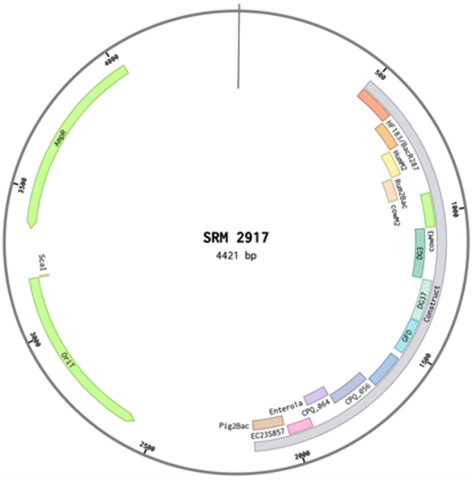Standards for Assessing the Safety of Recreational Waters from Fecal Contamination
Summary
Contamination of waterways with fecal material leads to the dissemination of pathogens and antibiotic-resistant bacteria that can have serious impacts on human and environmental health. In collaboration with the US Environmental Protection Agency, NIST developed an SRM plasmid containing 13 qPCR markers to help standardize the use of molecular water quality testing methods across the nation.
SRM 2917 is available for purchase from the Office of Reference Materials
Description

Over 286 million Americans get their tap water from a community water system. To assure the water safety, bacterial testing must be performed regularly. Major sources of contaminants include human derived sources, such as sewage leaks or combined sewer overflows; and agricultural sources, such as confined animal feeding operations and manure amendment of agricultural fields. In some watersheds, birds, deer, and other wildlife may also contribute to aquatic fecal loads. Reduction of aquatic fecal loads and increased protection of human and environmental health depend on distinguishing which of the many possible contaminating sources impact a body of water.
The EPA is responsible for protecting human and environmental health through the safeguard of recreation waters. To do so, molecular methods for identifying host-associated genetic markers of fecal pollution have been developed at EPA. These qPCR methods are being adopted by state and local public health agencies, as well as commercial entities.
NIST, in collaboration with the EPA, has developed a DNA reference material (SRM 2917) to assess the analytical performance of EPA-developed water quality quantitative polymerase chain reaction (qPCR) testing methods. The reference material consists of 6 levels of plasmid DNA within a stable matrix that can be stored refrigerated and used as-is.
Material characterization was described in a NIST Special Publication. Droplet digital PCR (ddPCR) was used to assign copy number concentration for each of the 6 levels.

